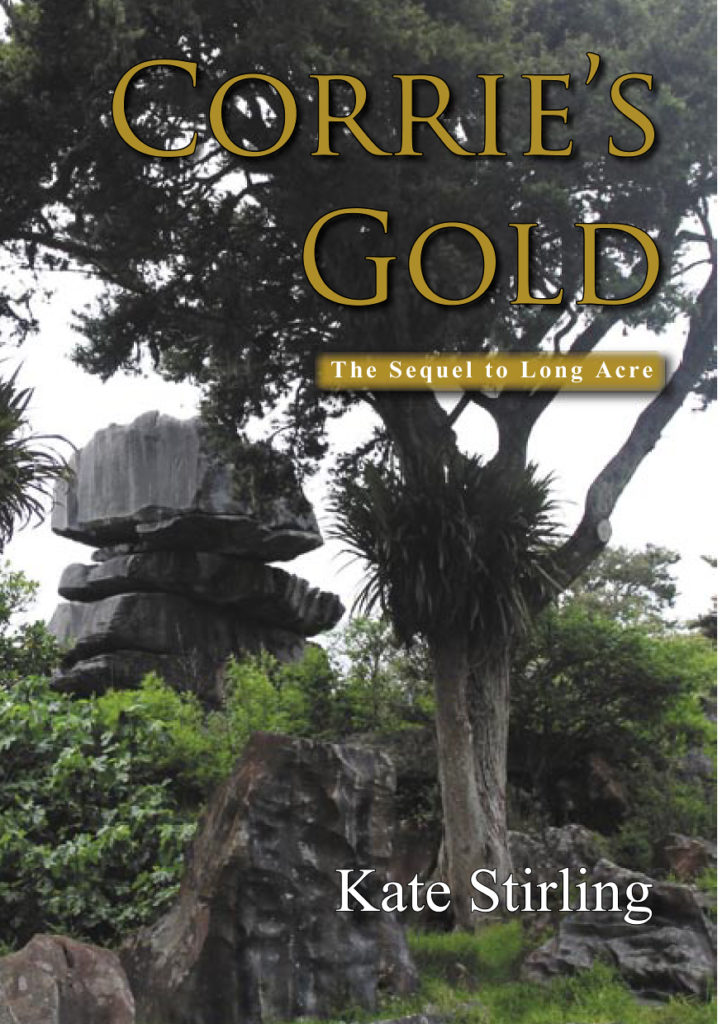
When Archaeologist Angus Corrie made a commitment to a small boy, he had no idea how challenging it would become.Corrie’s Gold is set between the black sands of the Taranaki west coast and the rocks of Northland’s volcanoes in New Zealand.
Extract
Autumn 1980
It had taken archeologist Angus Corrie quite a while to get his dates finalised but at last he was on his way to a site he had often visited with students over the years. As always, he looked forward to the energy the students produced. This would be one of the last few trips as autumn replaced the heat of summer.
When they arrived, he switched the van off and sat back. It had been a long journey and he was ready to stop; get out in that bracing wind and stretch his legs. Through the wet wind-screen he could see the tide was well out, the rocks black and shiny from the rain and the sea water. Sea birds straggled along, feathers flicking in the stiff breeze as they poked for small creatures amongst the loose rocks. Wet and cold or dry and hot, they still had to eat and their food was always there waiting.
The river was quiet this time though it could become a raging torrent that scoured new paths to the sea. Then it would strip another layer of sediment from between the larger rocks and leave ever more small fan shaped fossils exposed upon the dark sand. These layers upon layers of monotis were a Triassic-period shellfish that presaged the Jurassic Era of dinosaur fame. At some stage the sea floor must have been completely covered by them, their scallop shaped shells clustered together in the grey mud. Once again he wondered if they had been a plague or how they managed to live in such vast numbers.
At one side of the river rough, sharp grass grew close to the edge of the sand-hills where cattle grazed, but on the other side where Corrie stood, the scene was quite different. Here, row upon row of thin petrified rocks piled atop each other and stretched out into the water, like fingers clinging to the land as time slipped by.